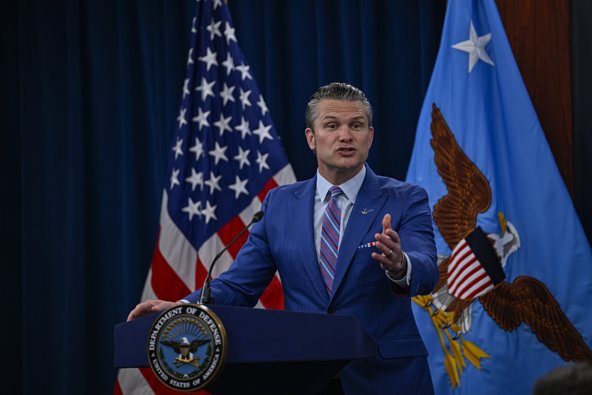
Pentagon Orders Drone Surge, Eases Deployment Restrictions
Defense Secretary Hegseth orders Pentagon to treat small drones as expendable weapons and accelerate deployment under Trump directive.
Pentagon Launches Aggressive Drone Initiative
In a decisive move to enhance U.S. military capabilities and outpace global competitors, Defense Secretary Pete Hegseth has issued new directives to fast-track the production, acquisition, and deployment of small drones across every branch of the military. The sweeping reforms, initiated at President Donald Trump’s command, signal a fundamental shift in how the Department of Defense will treat unmanned aircraft systems on and off the battlefield.
The orders, outlined in a series of newly released memos, allow commanders with the rank of colonel or captain to independently procure and test both commercial and 3D-printed drone systems, provided they meet national security standards. Legacy restrictions and bureaucratic hurdles have been rescinded, enabling units to operate and train with drones immediately—without waiting for lengthy approvals. Commanders are also permitted to test non-lethal autonomous unmanned aerial systems in controlled environments.
Crucially, the Pentagon now categorizes small drones—specifically Group 1 and 2 unmanned aircraft systems—as "consumable" items. Rather than being tracked as durable, high-end assets, these drones are to be used, replaced, and prioritized alongside other critical munitions. "Small UAS resemble munitions more than high-end airplanes. They should be cheap, rapidly replaceable, and categorized as consumable," one instruction stated.
Streamlining Training and Expanding Capabilities
Hegseth’s orders direct military branches to work with the Federal Aviation Administration to eliminate unnecessary range restrictions, expand spectrum approval, and create new training areas dedicated to live fire, combined arms, and swarm drone operations. Three new national test sites are to be established within 90 days, further expediting the integration of unmanned systems into combat readiness.
Weaponization protocols are also changing. Requests to arm drones must now be addressed by Weapons Boards within 30 days, and battery certifications are to be processed in just one week. Hegseth emphasized the urgency: "Lethality will not be hindered by self-imposed restrictions... Our major risk is risk-avoidance." He expects to see drone warfare fully integrated into all major military training by next year, with a goal of achieving U.S. domain dominance by the end of 2027.
To support this vision, the Pentagon will develop an AI-powered "Blue List," a searchable digital catalog of approved drone components, vendors, and performance metrics. By 2026, this database will be managed by the Defense Contract Management Agency, relying on nightly AI retraining to ensure data remains current and actionable.
Global Context and Industry Impact
The Pentagon’s initiative comes as drone warfare has rapidly evolved in global conflicts, including Ukraine, where both Russian and Ukrainian forces have leveraged unmanned systems for reconnaissance and direct attacks. Low-cost, GPS-guided drones such as Iran’s Shahed-136 have demonstrated their ability to evade traditional defenses and inflict significant damage at a fraction of the cost of missiles. In the Middle East, Israel’s Operation Rising Lion showcased the integration of drones with conventional air missions to strike high-value targets.
Recognizing these trends, Hegseth’s memos prioritize American industry in the forthcoming surge. The Department of Defense will offer advance purchase commitments, direct loans, and other capital incentives to domestic drone manufacturers within 30 days. Major procurement decisions are to favor U.S. companies, aiming to "jump-start the drone industry" and bolster national security.
As the U.S. military embraces this new era of unmanned warfare, the Pentagon’s aggressive reforms are poised to accelerate innovation, reshape battlefield tactics, and redefine the balance of power in the air. The initiative reflects a clear commitment to maintaining technological and strategic superiority amid intensifying global competition.






